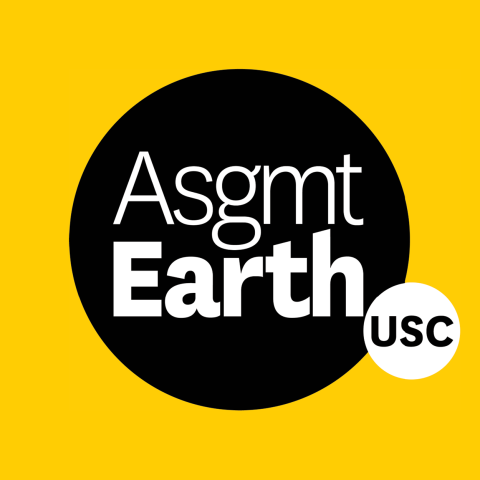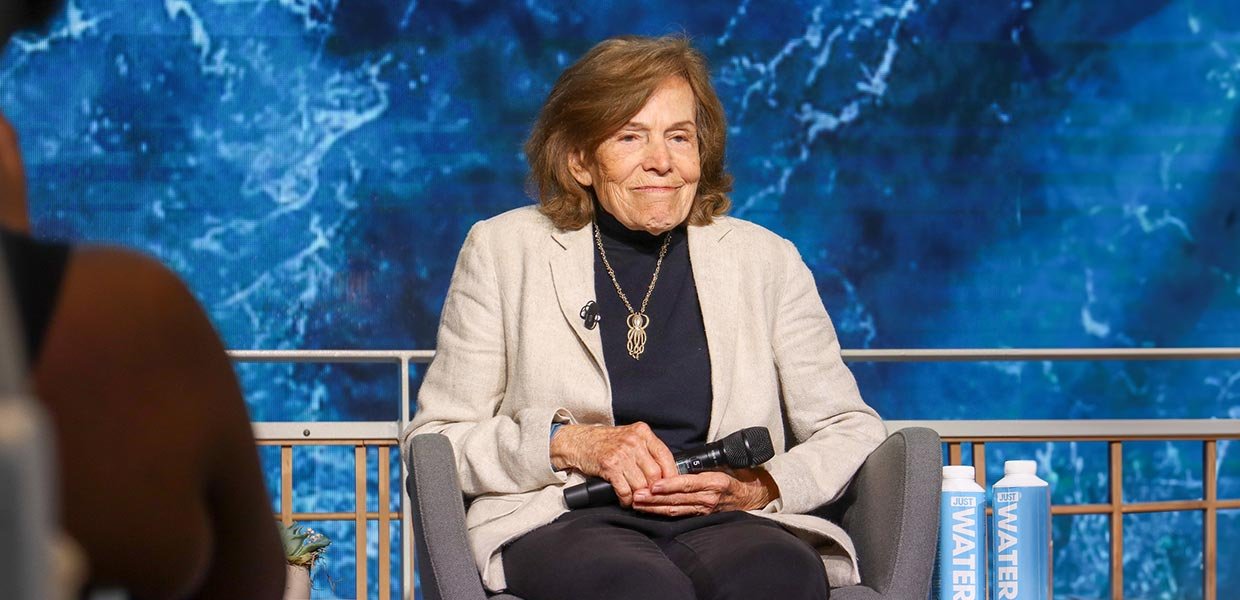“The ocean is in trouble, therefore so are we,” said Sylvia Earle who served as the inaugural climate communicator in residence at USC Annenberg’s Center for Climate Journalism and Communication this fall.
Through a series of public programs as well as group and one-on-one sessions with students, faculty and SoCal-based climate journalists, Earle shared her insights and guidance based on her celebrated career as an oceanographer, explorer and federal official.
“We need to look at all of the natural world and do whatever we can while we can,” she said. “[W]hat is my reason for hope? I think I'm looking at it. You're here. You have power and you're dedicated one way or another to communicating the state of the world. That is really the best cause for hope.”
Earle was the first woman to hold the role of chief scientist at the National Oceanic and Atmospheric Administration. She has been named a living legend by the Library of Congress, the first hero for the planet by Time Magazine and has led over 80 expeditions.
In 1979, she set the world's untethered diving record and pioneered the use of submersibles in underwater exploration. She has dozens of honorary doctorate degrees and was the recipient of the 2009 TED Prize for establishing a global network of marine protected areas that she continues to pursue in one of her many roles as president and chairman of Mission Blue and the Sylvia Earl Alliance.
Having seen Earle in action in Antarctica earlier this year, center director Allison Agsten explained that she selected Earle because she is one of the most captivating climate communicators that she’s encountered.
“Sylvia tells deeply meaningful stories rooted in marine science and her extraordinary lived experience,” Agsten said. “I knew she would connect with our communication and journalism students.”
Agsten added that she was heartened by how many USC students outside of USC Annenberg came to hear Earle speak.
“In conversations and in emails, students in other disciplines told me that through the center’s programming, they visited Annenberg – and learned about the concept of climate communications – for the first time,” Agsten said. “I am grateful that I had the opportunity to get to know and to support students whom I might not have encountered otherwise.”
The Center for Climate Journalism and Communication, which launched in 2022, designs customized programs for news and communication organizations by leveraging USC’s academic scholarship, targeted research initiatives and professional training expertise. They also develop programs for students like Annenberg Media’s Earth Desk, which engages students of all majors to cover climate-related news.
In her own words, here are four key takeaways from Earle during her visit.
Understanding the issues: So much is known, but it is not widely known.
When I was a kid, nobody knew what was going on in the deepest part of the ocean because nobody had been there. We still don't know much about what's going on, not just in the deepest parts of the ocean, but I think a percentage of the ocean hasn’t been seen, let alone explored.
I wish we could go back a hundred years, 200 years, 500 years and start the process of respecting the natural systems that make Earth habitable. We've treated nature as a free resource to take the water, air, wildlife, trees or whatever to turn them to human purposes. We've done a really good job of doing that. About half of the land has been converted to agriculture, either to directly provide food for us or to provide food for the animals that we consume. And then there's the ocean — we've been doing such a good job of consuming the natural resources and wildlife to the point that 90% of many of the big fish have already been consumed.
If you want waterfront property, consider Utah.
We know that sea level rises and falls over time; there’s lots of evidence. We're just speeding up the process and knowing this is the key to making a plan. It's not in terms of thousands of years, we're talking about decades; we're fueling the crunch already.
We were in Antarctica and we wore different attire generally, but what was so surprising is how warm it actually was. We had all the heavy gear to withstand what I expected to be the coldest, windiest, driest continent on the planet. But it was melting and the sun was high. We saw a rainbow, which is like, what's a rainbow doing in Antarctica? You have to have rain to have a rainbow and we had rain.
Take a little leap and think about the future.
Fifty years from now they can say either, yes, they got it, they figured it out, they started making the decisions and we're still here by the end of the 21st century. Or, if there's some survivors, I am sure they will wonder why didn't they do what needed to be done? The knowledge was there and they just sat around and did not change in the direction that is needed. We have the best chance there's ever been to secure an enduring place for ourselves on this biogeochemical miracle, with the emphasis on the bio-living planet, that there has ever been.
Spread the hope.
I think there are plenty of reasons for optimism. It's what this place, this school of journalism of communication, is all about. The knowledge is there that we need to get the public at large to know that not only is the planet warming, climate is changing. We need to get people up to speed with why, and most importantly, what to do about it. We have the best chance we will ever have armed with knowledge that could not exist until right about now.
We are the luckiest people who've ever been born because we have the capacity to act on this knowledge and do what it takes while there's still time. This is the moment. It would not be possible before, perhaps because we did not know what is now known, and if we wait much longer, we're gonna lose the chance. So lucky you, lucky us. Let's get on with it.
 The Center for Climate Journalism and Communication's mission aligns with Assignment: Earth, USC’s Sustainability Framework for a greener campus and planet. Assignment: Earth articulates the university’s commitment to addressing the impacts of climate change and creating a more just, equitable and sustainable future.
The Center for Climate Journalism and Communication's mission aligns with Assignment: Earth, USC’s Sustainability Framework for a greener campus and planet. Assignment: Earth articulates the university’s commitment to addressing the impacts of climate change and creating a more just, equitable and sustainable future.
